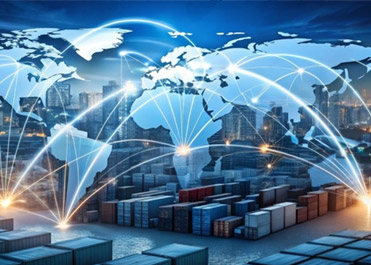The Role of Digitalization in Global Freight and Export Logistics
In today’s fast-paced global economy, digitalization has become a driving force in the freight and export logistics industry. With increasing demand for efficiency, transparency, and sustainability, businesses are leveraging digital tools to streamline supply chain operations. The integration of advanced technologies is transforming how goods are transported, tracked, and managed across international borders.
Key Technologies Transforming Logistics
1. Artificial Intelligence (AI) and Automation
AI-powered analytics and automation are revolutionizing logistics by optimizing routes, predicting demand, and reducing human errors. Machine learning algorithms enhance decision-making processes, leading to cost savings and improved efficiency in freight management.
2. Blockchain for Secure Transactions
Blockchain technology is enhancing transparency and security in global trade. By creating tamper-proof records of shipments, contracts, and payments, blockchain reduces fraud, minimizes disputes, and ensures compliance with international regulations.
3. Internet of Things (IoT) and Real-Time Tracking
IoT devices, such as GPS trackers and smart sensors, enable real-time monitoring of shipments. These tools help logistics companies track the location, temperature, and condition of goods, reducing risks of damage and ensuring timely deliveries.
4. Cloud Computing and Data Analytics
Cloud-based logistics platforms provide businesses with instant access to critical data, improving collaboration among stakeholders. Advanced data analytics help optimize inventory management, forecast demand, and identify inefficiencies in supply chains.
Benefits of Digitalization in Freight and Export Logistics
1. Enhanced Efficiency and Cost Reduction
Digital tools automate repetitive tasks, reduce paperwork, and improve workflow efficiency. By minimizing delays and optimizing transportation routes, companies can significantly cut operational costs.
2. Improved Supply Chain Visibility
Real-time tracking and data-sharing capabilities provide better visibility into supply chain operations. This transparency allows businesses to make informed decisions and respond proactively to disruptions.
3. Greater Compliance and Risk Management
Automated systems help companies comply with complex trade regulations by ensuring proper documentation and regulatory adherence. Digitalization also mitigates risks related to fraud, cargo theft, and customs delays.
4. Sustainability and Green Logistics
Digital solutions contribute to sustainable logistics practices by optimizing fuel consumption, reducing emissions, and promoting eco-friendly transportation alternatives. Smart logistics systems support the global push toward greener supply chain operations.
Challenges in Implementing Digital Solutions
Despite its numerous advantages, digitalization in logistics comes with challenges, including high implementation costs, cybersecurity threats, and the need for skilled workforce training. Companies must invest in infrastructure and cybersecurity measures to fully leverage digital transformation.
Conclusion
Digitalization is reshaping the global freight and export logistics industry by enhancing efficiency, transparency, and sustainability. Businesses that embrace emerging technologies can gain a competitive edge in international trade. While challenges exist, the long-term benefits of digital transformation outweigh the initial investment, making it an essential strategy for the future of logistics.







Leave a Reply
Want to join the discussion?Feel free to contribute!